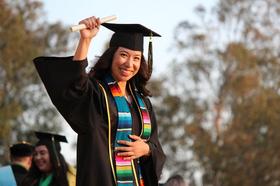For the 2025-26 school year, there are 3 private elementary schools serving 536 students in 56308, MN.
The top ranked private elementary schools in 56308, MN include St. Marys School and Zion Lutheran School.
The average acceptance rate is 25%, which is lower than the Minnesota private elementary school average acceptance rate of 88%.
Top Ranked 56308 Minnesota Private Elementary Schools (2025-26)
School
Location
Quick Facts
St. Marys School
(Catholic)
421 Hawthorne St
Alexandria, MN 56308
(320) 763-5861
Alexandria, MN 56308
(320) 763-5861
Gr: K-6 | 236 students Tuition & acceptance rate listed
Zion Lutheran School
(Lutheran Church Missouri Synod)
300 Lake St
Alexandria, MN 56308
(320) 763-4842
Alexandria, MN 56308
(320) 763-4842
Gr: PK-8 | 224 students Sports: 4 Tuition listed
New Testament Christian School
(Christian)
2505 State Highway 29 N
Alexandria, MN 56308
(320) 763-4050
Alexandria, MN 56308
(320) 763-4050
Gr: K-12 | 76 students
56308, Minnesota Private Schools (Closed)
School
Location
Quick Facts
307 4th Ave West
Alexandria, MN 56308
(320) 859-2130
Alexandria, MN 56308
(320) 859-2130
Gr: K-6 | 53 students
Frequently Asked Questions
What are the top ranked private elementary schools in 56308, MN?
The top ranked private elementary schools in 56308, MN include St. Marys School and Zion Lutheran School.
How many private elementary schools are located in 56308?
3 private elementary schools are located in 56308.
Recent Articles

Student Success Predictors at Community Colleges
A practical guide to student success predictors at community colleges for private school advisors helping graduates navigate two-year pathways.

Career Pathways with Community College for Private School Grads
Explore top career pathways with community college for private school graduates, including high-demand jobs, transfer options, and 2025 workforce trends.

Navigating the FAFSA & Financial Aid Timeline for Community College
Learn how to navigate FAFSA and financial aid timelines when starting at community college — from application to disbursement in 2025.
